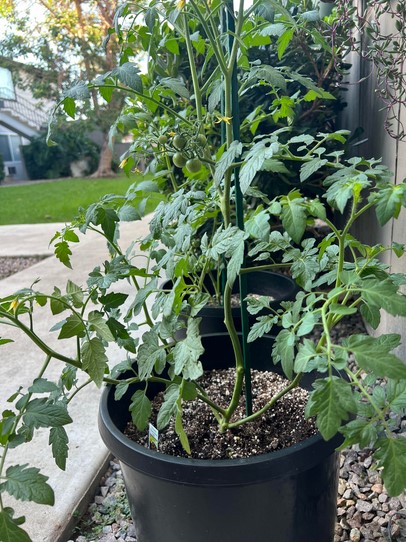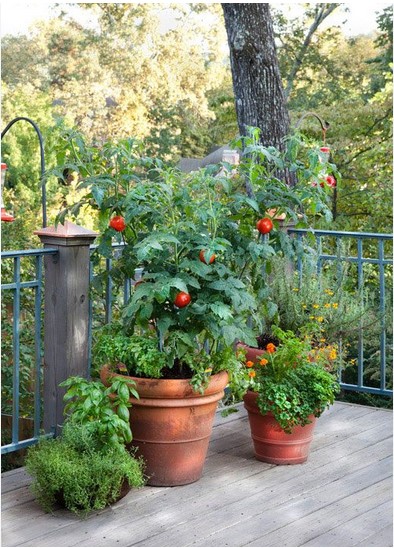Tomatoes are warm-season crops that love plenty of direct sun. To grow healthy, vigorous plants with a bounty of fruit, tomatoes need at least 6 to 8 hours of direct sun a day.
But for optimum results—particularly in cooler climates or on heavy-fruiting varieties—8 to 10 hours of direct sunlight a day is optimal. The more sun they get, the more efficiently they can carry out photosynthesis, which powers growth and fruit production.
Why Full Sunlight Is Needed For Tomatoes To Grow
Table of Contents

Tomatoes are among the most sun-reliant garden vegetables. They are most dependent on photosynthesis, a process in which plants transform sunlight into chemical energy.
This energy powers all aspects of the tomato plant life cycle—root growth and leaf growth, flower production, and fruiting. Without sufficient sunlight, the plant cannot function and performs poorly, leading to stunted growth, low fruit yield, and heightened susceptibility to insects and disease.
Welthuesmilch.
When tomatoes are not growing well due to insufficient light, they become leggy, meaning that they are growing tall and thin in an attempt to reach the sun.
This will make the stems grow weaker and more prone to bending or breaking, and less capable of holding the weight of fruit. The energy deficit also results in fewer flowers, and therefore less chance for fruit to develop. Even when they do fruit, low light conditions slow ripening considerably, tending to produce pale, underdeveloped, or tasteless tomatoes.
Additionally, tomatoes produced under full sun usually have better immunity to usual plant diseases like blight and powdery mildew. Sunlight causes the leaves to dry faster after watering or rain, eliminating the wet conditions that facilitate the growth of fungi and bacteria. The general well-being and hardiness of the plant become significantly enhanced with 8 to 10 hours of direct sunlight per day.
Aside from plant health, sun also has a critical impact on the quality of the tomatoes themselves. Full sun exposure helps in bolder flavor, richer color, and higher levels of natural sugars and nutrients in the fruit. In short, providing your tomato plants with bountiful sunshine is not so much about keeping them alive—it’s about making it possible for them to flourish and yield a flavorful, bountiful harvest.
Selecting the Proper Location

When growing tomatoes outside, pick a south-facing or west-facing area that receives sunlight all day long. Sunlight in the morning is particularly crucial as it dries dew off leaves and inhibits fungal diseases. Plant tomatoes away from areas where they will be shaded for long periods of the day—even a couple of hours of shade will have a noticeable effect on yield.
If you’re cultivating tomatoes in pots, you have greater freedom. Pots can be shifted to track the sun, which is a big plus in tiny gardens or on balconies. Try putting them on rolling plant caddies or against reflective walls to get the most sun.
Growing Tomatoes with Limited Sun

If your garden receives less than six hours of sunlight, cultivating tomatoes can still be done—but with some modifications:
- Select small or quick-growing types like cherry tomatoes (Sungold, Sweet 100) or determinate bush varieties (Bush Early Girl).
- Utilize reflective surfaces such as white walls, aluminum foil, or light-colored gravel to bounce light onto your plants.
- Trim surrounding trees and shrubs to let more sky in.
- For very low-light areas, augment with grow lights. Indoors or in greenhouses, full-spectrum LED grow lights can offer the equivalent of sunlight. Keep these on for roughly 12–16 hours a day to provide sufficient growth.
Seasonal Considerations
The sun’s angle and exposure time change by the seasons. Sunlight in spring and summer is more direct and days longer, so this is the best time to cultivate tomatoes. Later summer or autumn, shadows increase in length and the sun’s angle decreases, so ensure that plants are positioned to receive full sun exposure still. Greenhouses or raised beds may be used to extend the growing season and increase light exposure in colder climates.
Quick Tips For Growing Tomatoes
- Minimum sunlight – 6 hours per day of direct sun
- Optimal sunlight – 8–10 hours of vigorous growth and high yield
- Best placement – South- or west-facing and full exposure
- Container advantage – Easy to rearrange and shift for sunlight
- Low-light workaround – Cherry or dwarf varieties, reflective surfaces, or supplemental grow lights
Wrapping Up
By providing your tomato plants with sufficient sunlight, you’re preparing them for a period of vigorous growth, robust foliage, and a bounty of tasty fruit.
Whether you’re growing in a garden bed, container, or even indoors with grow lights, ensuring your tomatoes receive 8 to 10 hours of direct sunlight per day can make the difference between a mediocre yield and a harvest to be proud of. With the right light and care, your tomato plants will reward you with rich flavor, beautiful color, and abundant fruit all season long.
Happy gardening!
Leave a Reply